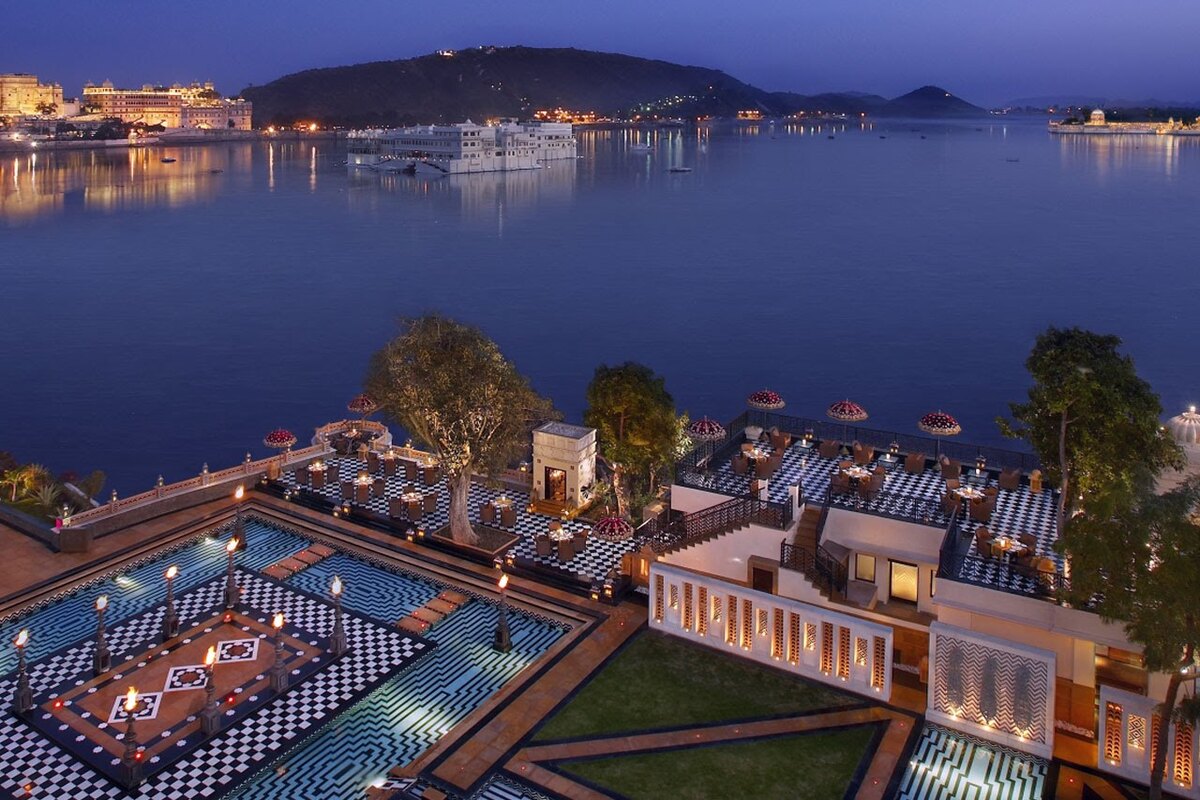LS Speaker inaugurates Constitution Club of Rajasthan; Congress boycotts event
Birla expressed gratitude to former Rajasthan Assembly Speaker Dr CP Joshi for initiating the project during the previous government.
Udaipur was founded in 1553 by Maharana Udai Singh II as the new capital of Mewar Kingdom. It is located in the fertile, circular Girwa Valley to the southwest of Nagda, which was the first capital of Mewar.

udaipur- city of lakes (photo: stock)
Often referred to as the ‘Venice of the East, the city of lakes Udaipur is located around azure water lakes and is hemmed in by lush green hills of Aravallis. The famous Lake Palace, located in the middle of Lake Pichola is one of the most beautiful sights of Udaipur. It is also home to Jaisamand Lake, claimed to be the second-largest man-made sweet water lake in Asia.
The beautiful City Palace and Sajjangarh (Monsoon Palace) add to the architectural beauty and grandeur of the city. The city is also known for its profusion of zinc and marble. Solar observatory in Lake Fateh Sagar is the only observatory in India located on an island and has been made on the pattern of Big Bear Lake in Southern California. The ten-day Shilpgram Festival which starts from 21 Dec to 30 Dec pulls in a large number of people interested in arts and crafts.
Advertisement
Udaipur was founded in 1553 by Maharana Udai Singh II as the new capital of the Mewar Kingdom. It is located in the fertile, circular Girwa Valley to the southwest of Nagda, which was the first capital of Mewar.
Advertisement
Why Udaipur is known as The City of Lakes?
Picturesque and elegant, Udaipur is known by many names, including “the City of Lakes”. Undoubtedly one of India’s most romantic cities, it nestles between the glassy waters of its famous lakes and the ancient Aravalli Hills.
Although it is one of Rajasthan’s largest cities, modern Udaipur manages to retain a charming small-town vibe. At the heart of the city lies the serene Lake Pichola, with the Old City sprawled along its east bank. When talking about the beautiful cities of India, Udaipur can never be left behind.
The sparkling waters of Udaipur make it one of the most enchanting locations of Rajasthan. The lake palace of this city is famous for how marvelously it has been constructed, and during the evening when the lake lights up with shimmering lights, the sight can’t be forgotten.
The Pichola Lake is like a cherry at top of the cake of Jaisamandh, Fateh Sagar, Udai Sagar, and Dudh Talai lakes. The banks of the lakes in Udaipur are nothing short of captivating.
History of Lakes in Udaipur
Udaipur is a western state in India and is a land of royalty. Kings of different eras reigned over the place and had left a mark, an intangible bond with this ‘City of Lakes’. Numerous palaces beautify the surrounding mountains and these mountains are home to beautiful lakes. Famous among those are the Pichola Lake, Jaisamand Lake, Rajsamand Lake, Swaroop Sagar, and so on. Pichola Lake is a natural lake formed during the 12th century by Pichu Banjara during his reign. This majestic lake is the oldest of this state and also the largest one.
Jaisamand lake also holds records of being the largest artificial lake in India and the second largest in Asia. Udai Sagar lake is another pivotal lake of Udaipur, which was completed in 1565 starting from 1559. Based on the names of the places, their palaces, and lakes, it is common that they take their name after contemporary rulers. One such is the Fateh Sagar Lake, named after Maharana Fateh Singh. This lake takes its dwindling path at the confluence of Moti Magri hills, creating an explicit beauty. Other such lakes are Doodh Talai, Jiyam Sagar, Ki Taleb, and many others.
Wherever you go, you are never far from the lakes. Udaipur offers the view of the water from it every part. Whether it is the cafes peppered throughout the city, the gorgeous Monsoon Palace, or some lonely road you drive on – you can always find the presence of a beautiful lake nearby. This also keeps the city cool and lends an aura of romance to the entire city.
We hope we were able to explain to you why this ancient city is known as the City of Lakes. 8 lakes in one city, not bad at all huh? If you are planning to explore Udaipur and get to see all of these lakes in person, then don’t wait just go for it.
Advertisement